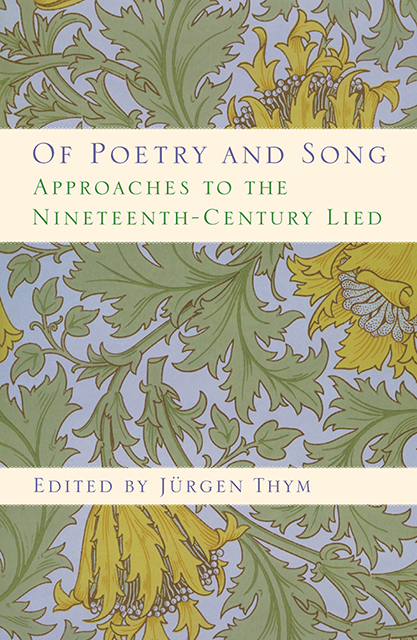Chapter Eight - Repetition as Structure in the German Lied: The Ghazal
Published online by Cambridge University Press: 02 March 2023
Summary
In contrast to most folk songs and popular songs, such as those discussed by Mark Booth in his monograph The Experience of Songs, art songs set preexisting poems. It is therefore understandable that when we examine text-music relationships in the German Lied, we often analyze the settings as responses to, or even imitations of, the poems that are their subjects and programs. Although we do not necessarily declare a setting aesthetically inferior if it does not follow the poem closely, establishing the extent of parallelism is a standard part of stylistic analysis.
But what exactly are the elements of a text to which a composer may choose to respond? Customarily, analysts look at how a song interprets, expresses, or enacts a sense of its text—how, for example, it renders an expressed emotion or whether it responds to an ironic current of meaning. Much less systematic are investigations of the other levels of a poem to which a composer's attention may turn, in particular its metric, rhythmic, and formal dimensions. Indeed, one might question whether a composer can respond to such dimensions or whether musical rhythm and structure do not simply overpower their more delicate textual counterparts.
In addition, one might ask how one can isolate the formal features of a text decisively enough to assert that a setting corresponds to them rather than to the ideas or syntax of text or to some “purely musical” consideration.
Our goal here is to find a means of approaching such questions. To focus attention on poetic form in Lied settings, we have chosen examples of an unusual and highly patterned structure: the Persian ghazal in its German realizations. By examining a variety of ghazals and comparing their settings, we hope to demonstrate that a poetic form can indeed reach through a poet's text, exerting influence on the musical setting and presenting the composer with at least partially specifiable compositional choices. In so doing, we hope to contribute to a general expansion of the analysis of text-music relationships.
The ghazal is not characterized by its length, which varies from about four to perhaps fifteen couplets, or by its meter, which is chosen freely by the poet and remains constant through the poem, but instead by the single rhyme that binds each poem.
- Type
- Chapter
- Information
- Of Poetry and SongApproaches to the Nineteenth-Century Lied, pp. 220 - 239Publisher: Boydell & BrewerPrint publication year: 2010



